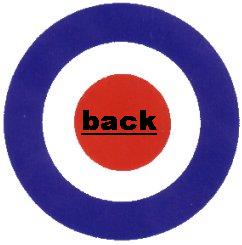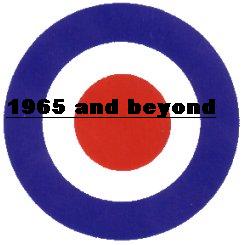THE EARLY YEARS
The era we today refer to as the mod movement has its roots in the very first years after the war. Britain was just recovering from the Blitz and the aftermath of the war led to a very different attitude towards life. A whole generation turned to seizing the day instead of worrying about tomorrow. Combined with a strong determination to brush aside all social conventions, the young were dead set on going all the way.
London, and Soho in particular, became once again the hub of this new spirit which saw young people dress extremely smart, listen to modern jazz and bebop and hang out in trendy nightclubs. They shed everything that had links to the past and took to shaping their future all by themselves. Hence the modernists –their name derives from their love of all sorts of modern music – looked across the Atlantic for inspiration. America was the land of money and all things considered trendy. Since young people had more cash at their disposal, they didn’t hesitate to pursue all things American, such as records by artists like Charlie Parker, Dizzy Gillespie or Miles Davis, or establishment clothing such as mohair suits or button-down shirts by Brooks Brothers. Since the aforementioned jazz icons were always impeccably clad, the young modernists tried to emulate their style. In addition the suit still was a classic British statement which also epitomized the passage from boy to man. Furthermore wearing a suit helped to blend in with society and draw attention away from all other illicit actions connected to the modernist lifestyle.
But the mods weren’t the only ones to evolve after the war. The so-called teddy boys were also fascinated by American music and lifestyle, but they, in contrast, fell strongly for rock’n’roll and its protagonists like Bill Haley or Elvis Presley. Those teddy boys first dressed themselves in drape jackets, brothel creepers and wore their hair slicked back. But this trend wasn’t to last and the teddy boy movement soon faded or the teddy boys later became the rockers who would eventually end up being the mods’ bitterest rivals.
The mod movement, however, was gathering ever more pace. It wasn’t long before a very small core group of about twenty modernists grew to a considerable force. The mods would still find impulse across the Atlantic, but the influence of stylish French and Italian clothing began to supersede. Many would also amalgamate the dress sense of avant-garde film stars such as Rock Hudson or Humphrey Bogart.
As mentioned above, the mods were totally obsessed with style and clothing. They targeted expensive fashion outlets in London’s West End as well as established tailors, much to the annoyance of the latter since most mods had their own ideas as to how the perfect suit had to look. Because of that they were very much committed to detail and wanted their suits to be perfect.
A new fashion item every week of course left a considerable dent in most mods’ pockets. But they carried on regardless and soon also turned to a rather casual style. Colourful shirts and jumpers and narrow trousers now turned out to be the order of the day. People like John Stephen, who originally came from Glasgow to set up several shops in London that had the latest fashion in stock, were responsible for this revolution in fashion. He also designed his own line of clothing, but only in limited numbers. The result was that those items were eagerly sought after by the mods. Fashion had become a male pastime, whereas before fashion had been a purely female domain.
Not only did their fashion change, but also the music the mods listened to. Contemporary black American music such as R&B turned out to be the mods’ new darling.
To be continued…


